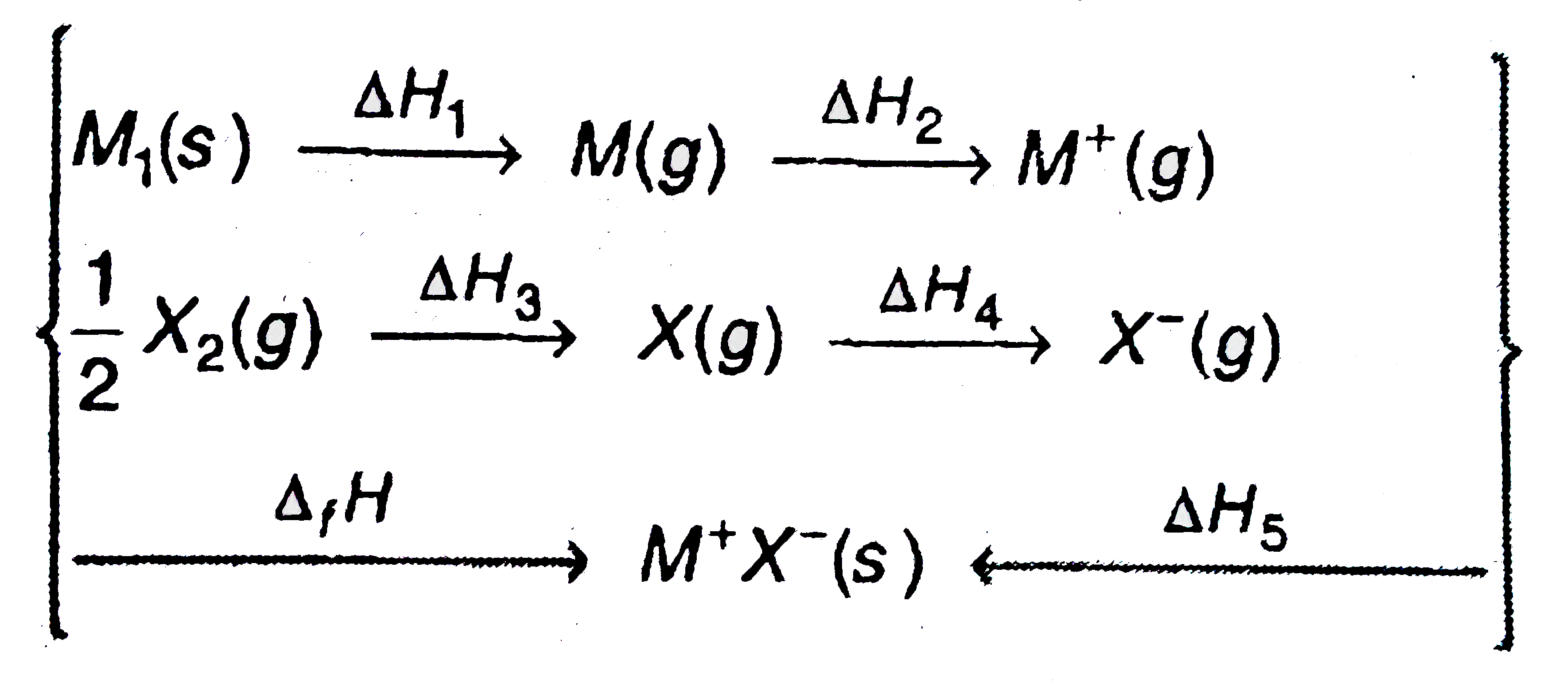Consider the Born-Haber cycle for the formation of an ionic compound given below.
M(s)△H1−−→M(g)△H2−−→M+(g)
12X2(g)△H3−−→X(g)△H4−−→X−(g)△H5−−→Z
Here, Z refers to
A
M+X−(I)
B
M+X−(s)
C
MX2
D
M+X−(g)
Video Solution
Text Solution
(b) The Born-Haber cycle takes place as follows: 
|
Topper's Solved these Questions
Similar Questions
Knowledge Check
C(s)+O2(g)Δ−−→CO2↑⏐⏐
AFor disproportionation reaction.BFor comproportionation reaction.CFor either intermolecular redox reaction or displacement reactionDFor either thermal combination redox reaction or thermal decomposition redox reaction.The heat enegry required to ionise the following molecules is given as follows:
N2(g)ΔH1−−→N⊕(g),O2(g)ΔH2−−−→O⊕(g)22
Li2(g)ΔH3−−→Li⊕(g),C2(g)ΔH4−−−→C⊕(g)22
Arrange the heat terms in decreasing order of enegry:AΔH1>ΔH3>ΔH2>ΔH4BΔH2>ΔH3>ΔH1>ΔH4CΔH3>ΔH4>ΔH1>ΔH2DΔH3>ΔH1>ΔH4>ΔH2CH3CH2ClNaCN−−−→XNi/H2−−−→Y
YAcetic−−−−−→anhydrideZ
Z in the above reaction sequence isACH3CH2CH2NHCOCH3BCH3CH2CH2NH2CCH3CH2CH2CONHCH3DCH3CH2CH2CONHCOCH3
CH3COCH2COOC2H5NaBH4−−−−→X
The product X is
View SolutionProcess Na2+(g)I−−→Na+(g)II−−→Na(g)
View SolutionC2H5IKOH(alc)−−−−−−→ACl2(g)−−−→770KX, X can be
View SolutionThe heat energy required to ionise the following molecules is given as follows
N2(g)ΔH1−−→H⊕2(g),O2(g)ΔH2−−→O+2(g)
Li2(g)ΔH3−−→Li⊕2(g),C2(g)ΔH4−−→C⊕2(g)
The correct decreasing order of energy in terms of heat
View SolutionWhich of the following feature of catalysts is described in reactions given below?
(i) CO(g)+2H2(g)Cu/ZnO−Cr2O3−−−−−−−−−−→CH3OH(g)
(ii) CO(g)+H2(g)Cu−−→HCHO(g)
(iii) CO(g)+3H2(g)Ni−−→CH4(g)+H2O(g)
View Solution
